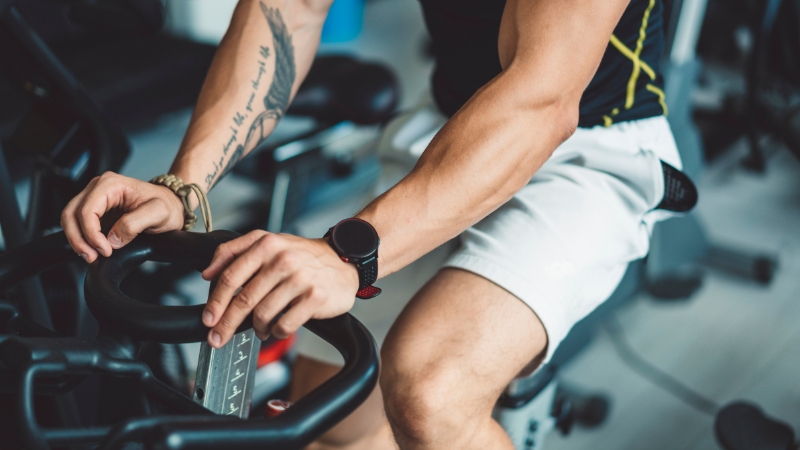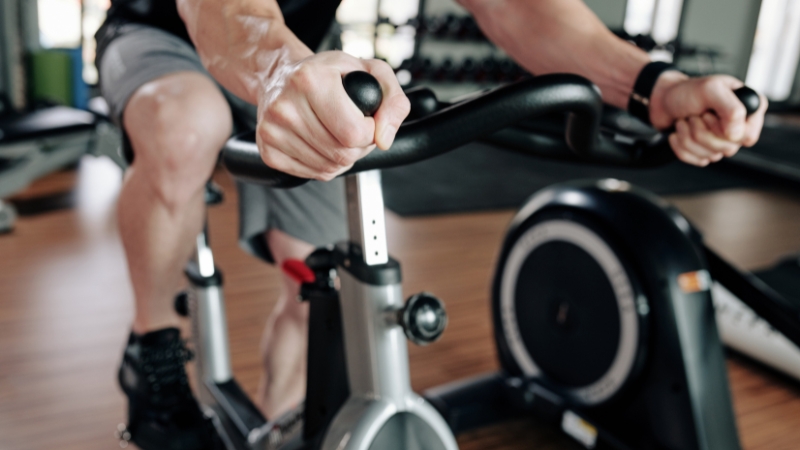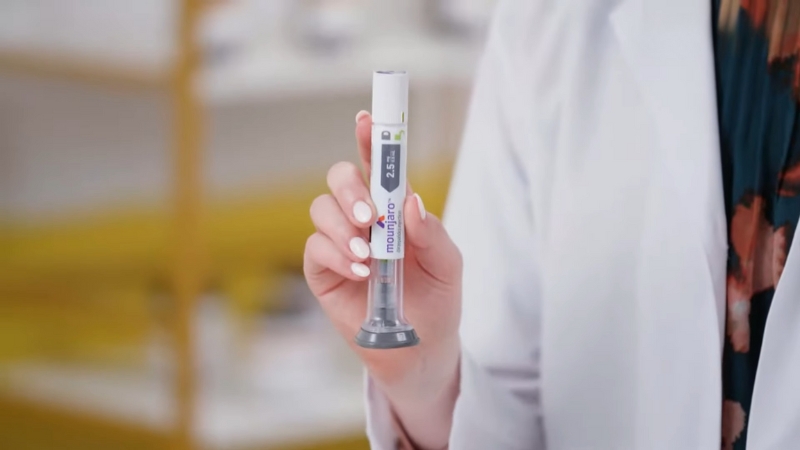
Share Post:
Cardio influences hormone levels, energy, and sexual performance in real ways. The effects depend on the type, intensity, and duration of the workout.
Some cardio boosts testosterone and stamina, while others reduce both. Knowing the right balance helps improve results without harming health.
Table of Contents
Toggle1. Moderate Cardio Supports Testosterone and Overall Vitality

Moderate cardio helps raise testosterone levels and improves physical stamina without overstimulating the stress response. Regular sessions of brisk walking, swimming, or cycling promote fat loss, which reduces estrogenic activity and supports better hormonal balance.
As blood circulation improves through consistent cardio, many men report stronger erections, improved performance, and in some cases, more length or girth during arousal due to enhanced vascular expansion. Better hormone function also brings sharper focus, higher energy, and increased interest in intimacy.
Hormonal Balance Through Controlled Training
Low to moderate-intensity cardio helps keep cortisol levels in check. This creates a favorable environment for testosterone production. With improved hormone regulation, men may see better recovery, steadier mood, and consistent sexual drive.
Fat Loss and Testosterone Preservation
Reducing body fat helps limit testosterone-to-estrogen conversion. Lower fat stores mean less aromatase activity, leading to more available testosterone in the bloodstream. Cardio acts as a key tool to maintain this hormonal advantage.
2. Excessive Endurance Training May Lower Testosterone
Extended and intense endurance exercise can reduce testosterone levels in men due to prolonged elevation of cortisol. Research shows that frequent long-distance running, triathlon training, or multi-hour cardio sessions increase physiological stress, which disrupts the hypothalamic-pituitary-gonadal axis.
This disruption weakens the hormonal signal chain responsible for testosterone production. Over time, symptoms like fatigue, decreased libido, poor recovery, and muscle loss become common in men who overtrain without rest or nutritional support.
In some cases, these hormonal imbalances may also lead to erectile dysfunction (ED). When lifestyle adjustments are not sufficient, certain physician-guided treatments such as injectable therapies can be considered to help improve and support normal function.
Documented Evidence and Case Study Insights
Several clinical studies confirm the link between chronic endurance training and hormonal suppression:
| Study | Population | Findings |
| Hackney (2001) | Male endurance athletes | Significantly lower total and free testosterone levels |
| Daly et al. (2005) | Long-distance runners | Reduced luteinizing hormone, slower post-exercise recovery |
| Lucía et al. (2003) | Elite cyclists | Symptoms of hypogonadism after extended training cycles |
Endurance-focused sports create consistent hormonal strain, especially without sufficient caloric intake or rest periods.
Symptoms of Testosterone Suppression
- Lower libido or erectile quality
- Increased abdominal fat
- Decline in muscle mass
- Irritability and low mood
- Chronic fatigue or brain fog
These symptoms often emerge in men who exceed five days per week of high-volume cardio without structured recovery protocols.
Mechanism Behind Hormonal Decline
Chronic endurance training keeps cortisol elevated for long periods. High cortisol reduces gonadotropin-releasing hormone, leading to lower levels of luteinizing hormone.
Without sufficient LH stimulation, the testes cannot maintain adequate testosterone output. This cycle intensifies with poor nutrition, sleep deprivation, and emotional stress.
How to Prevent Hormonal Imbalance
- Limit intense endurance cardio to three sessions per week
- Add two to three days of strength training to stimulate testosterone
- Ensure caloric intake matches energy output
- Include recovery days with light activity or rest
- Sleep seven to nine hours each night for full hormonal reset
3. High-Intensity Interval Training (HIIT) Enhances Testosterone
Short bursts of intense effort followed by rest periods stimulate a sharp hormonal response. HIIT routines, such as sprint intervals or circuit-style bodyweight workouts, lead to increased testosterone production immediately after exercise.
Unlike long endurance workouts, HIIT causes less sustained cortisol elevation and maximizes anabolic response. Men benefit from improved lean muscle retention, sharper focus, and stronger libido with consistent HIIT routines.
Benefits Over Steady-State Cardio
- Stronger hormonal response
- Shorter workout duration (15 to 25 minutes)
- Lower risk of muscle loss
- Efficient fat reduction
- Enhanced metabolic rate
Key Considerations for Results
- Perform HIIT two to four times per week
- Combine with rest days or low-impact movement
- Prioritize proper hydration and warm-up
4. Cardio Improves Endurance and Sexual Health

Cardiovascular training boosts oxygen use and heart function, directly supporting physical stamina and sexual performance. Better blood circulation strengthens the ability to maintain erections and sustain sexual activity with less fatigue.
Testosterone benefits compound these effects by increasing desire, responsiveness, and confidence. With regular cardio, men often report more reliable performance and improved satisfaction.
Circulatory Benefits for Sexual Function
Improved vascular health is key to optimal erection quality. Aerobic workouts increase nitric oxide availability, which helps blood vessels dilate.
Stronger cardiac output ensures that more blood reaches the pelvic region during arousal. This effect supports both firmness and perceived length during sexual engagement.
Endurance and Energy Gains
- Slower heart rate at rest
- Higher VO2 max levels
- Delayed muscle fatigue
- Quicker recovery between physical efforts
- Longer-lasting sexual performance
5. Balance Between Cardio and Strength Training Is Crucial
@tylerpath If you’re concerned about cardio ruining your gains in the gym, here’s what you should do to minimize the likelihood of cardio having a negative impact on your weight training. #fyp #fitness #gym #bodybuilding ♬ original sound – Slowed songs
Testosterone thrives under mechanical stress created by resistance movements, not just cardio. A routine combining strength training and moderate cardio supports hormonal health, body composition, and functional strength.
Too much cardio without resistance work may lead to muscle loss and lower testosterone. The right mix allows fat reduction without sacrificing lean mass or libido.
Comparative Training Effects
| Training Type | Testosterone Impact | Muscle Maintenance |
| Cardio Only | Mild to low increase | Possible loss over time |
| Strength Only | High increase | Strong retention |
| Combined Routine | Balanced improvement | Lean mass preserved |
Integrated programs give the hormonal benefits of strength training while using cardio to support endurance and fat loss.
Weekly Structure for Optimal Hormones
- Two ot three sessions of strength training (compound lifts)
- Two to three moderate cardio sessions (brisk walk, rower, swim)
- One active rest day (stretching, yoga, casual walk)
- Sleep, protein intake, and hydration support all progress
FAQs
Endnote

Cardio influences testosterone, stamina, and sexual health in powerful ways, but the results depend on training style and balance. Moderate cardio raises testosterone, improves blood flow, and supports better physical performance, including more noticeable length or girth during arousal.
Excessive endurance, on the other hand, can lower testosterone, reduce energy, and harm sexual function. The best results come from combining cardio with strength training, eating enough to support recovery, and avoiding overtraining.
References
- Kraemer, W.J. et al. (1998). Hormonal responses to consecutive days of heavy-resistance exercise with or without nutritional supplementation. Journal of Applied Physiology. Available at: https://journals.physiology.org/doi/full/10.1152/jappl.1998.85.4.1544
- Male Excel. (2023). Does Cardio Lower Testosterone?. Available at: https://maleexcel.com/blog/health/does-cardio-lower-testosterone/
- Hackney, A.C. (1989). Endurance Training and Testosterone Levels. Sports Medicine, 8(2), 117–127. Available at: https://link.springer.com/article/10.2165/00007256-198908020-00004
Related Posts:
- What Testosterone Really Does for Men - Health Gains…
- Cardio vs. Yoga - Which is Better for Mental Health…
- How Omega-3 Supplements Support Overall Fitness and Health
- Treadmill vs Running Outside - Which is Better for…
- 4 Best Ways to Treat Shin Splints Before They Turn…
- 10 Best Ways to Soothe Tired Legs After a Tough Workout









